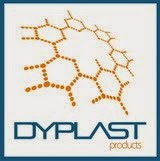One of Dyplast's efforts over the past years has been to
advocate for clarity and full disclosure of technical and empirical information
- - not only in Dyplast literature but also in literature generally within the
public domain. Dyplast's recent Technical Bulletins, Qwik Guides, and Articles
(e.g. LNG Industry Magazine) set good examples.
Thus we feel we must comment on a Technical Paper presented
at the recent IIAR Conference in Orlando titled: "Hygrothermal Analyses of
Ammonia Refrigeration Pipe Insulation Systems" which contains
misinformation. The Paper represents that it used computer modeling to predict
moisture content that would accumulate in various insulation materials on
ammonia refrigeration pipe over long periods, up to 10 years. Pipe insulation
scenarios with and without vapor retarders were modeled.
In general, we offer that readers should always be cautious
when evaluating conclusions from computer modeling software that are contrary
to empirical evidence and logical thought processes.
Dyplast's most pertinent comments include:
Point #1: The Paper states it used 1.8 lb/ft3
polyisocyanurate (PIR) as its test specimen; to our knowledge this density of
PIR is very rarely, if ever, used in ammonia refrigeration pipe applications.
More commonly it is 2.0 or 2.5.
Point #2: The Paper predicts that over ten years, without a
vapor retarder, the moisture content of the PIR insulant would be about 90% by
volume. First of all, ammonia refrigeration systems present challenging
problems, and the installation guidelines for virtually ALL insulants require a
vapor retarder - - and more often a vapor barrier. Yet even without a vapor
retarder, the claim of 90% moisture by volume lacks credibility. 90% by volume
is over 3000% by weight, meaning the 1.8 lb/ft3 insulant would weight 56
lb/ft3. To our knowledge, a moisture content at this absurd level has never
been recorded, and frankly appears impossible.
Point #3: The Paper indicates a thermal conductivity of
0.187 Btu.in/hr.ft2°F at 10°C was utilized in the calculations, which does not
even meet ASTM C591 Standards (≤ 0.18), and thus could not be used on an
ammonia refrigeration system. The k-factors of ISO-C1/2.0 and 2.5 meet ASTM
C591 requirements.
Point #4: The Paper does not explain how the computer model
works or to what extent the outputs have been validated against real-life
scenarios. Dyplast may address this in a future Technical Bulletin.
For more information please contact us at info@dyplast.com




